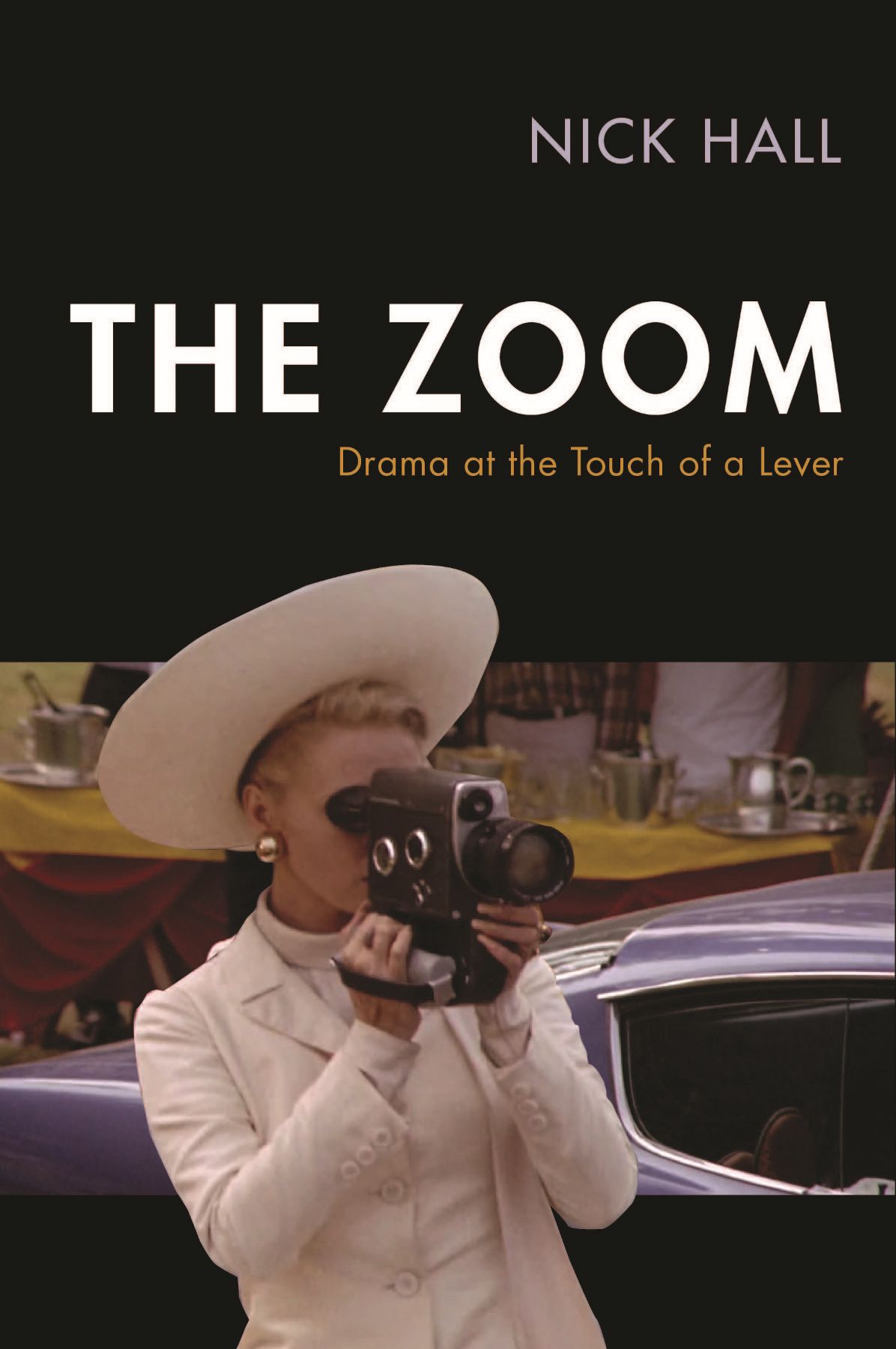Inspired by the Society for the History of Technology’s Three Minute Dissertation Video Contest, I have made this short film which describes, in the smallest of nutshells, one of the key findings from my doctoral research into the history of the zoom lens.
(Click here for a transcript.)
Further Reading
Various pages on this website will be useful if you wish to read further the history covered in this video. In particular a short biographical sketch of Frank G. Back, and – for a broader view – a short essay addressing the thorny question of “who invented the zoom lens?”. For a ‘published’ source, you may wish to refer to my chapter in Television Aesthetics and Style, edited by Jason Jacobs and Steven Peacock and published in 2013 by Bloomsbury Academic.
Footage Sources
With the exception of the clip from Kukla, Fran and Ollie, all moving footage is from the Prelinger Archive. In order of appearance:
- 00:00:21-00:00:33 (shots of filming, and film cans): An Old Chinese Proverb: One Picture Is Worth Ten Thousand Words. Jerry Fairbanks Productions, 1946. Link to original footage
- 00:00:42-00:00:53 (aerial shots of New York City): Arteries of New York City. Encyclopaedia Britannica Films, 1941. Link to original footage.
- 00:00:53-00:01:07 (Signal Corps camera operators, explosions, airdrop): Report to the Armed Forces, Issue No. 141: The Role of the Comat Cameraman. National Archives and Records Administration. Link to original footage.
- 00:01:28-00:01:40 (Baseball): Red Sox in Action. Narrangansett Brewing Company. Link to original footage.
- 00:02:27-00:02:47 (Television studio shots): The Story of Television. Institute of Visual Training / Radio Corporation of American, 1956. Link to original footage.
- Sproul, Merrill F., Jr. “To Zoom… Or Not To Zoom.”Bolex Reporter 10.3 (Summer 1960): 18-19.
- Back, Frank G. Varifocal Lens for Cameras. US: Patent 2454686. Patented 23 Nov. 1948.
- “It’s New, It’s Amazing…” (Paramount Advertisment) NBC Company Records. Box 596, Folder 32. Wisconsin Center for Film and Theater Research.
- Ford, Victor. “How Zoomar Aids TV Photography.”American Cinematographer 50.6 (1949): 202+.
- “Lens Puts Zoom In Television.” Popular Science August 1947: 126-7.
If you have any questions about this video or would like further information, please email me: nick@zoomlenshistory.org.uk.
Zoom lenses enable a camera operator to vary the field of view without moving the camera: to zoom in, or zoom out.
They’ve always been highly controversial among filmmakers. They’re often seen as a lazy substitute for ‘real’ camera movement, associated with ‘cheesy’ 1960s and 1970s Hollywood action movies.
But when I started to research the history of zoom lenses, I discovered a hidden story. One that had been forgotten by film historians, but was crucial to our understanding of the technology.
In 1939 an optical engineer named Frank Back emigrated to the United States of America, fleeing the Nazi takeover of Austria. He settled in New York City, and took up employment as a consultant engineer.
Before long he was working on military contracts. Among his designs was a zoom viewfinder to be used by the combat cameramen of the Signal Corps.
As the Second World War drew to a close, the American economy got ready for peacetime. Frank Back took what he had learned and developed a new form of zoom lens that could be used by newsreel cameramen. He called it the “Zoomar”.
With the help of the industrial film producer Jerry Fairbanks and a Madison Avenue advertising executive named Jack Pegler, Back sold the Zoomar to Paramount News.
They took it Yankee Stadium and used it to film the World Series baseball between the Brooklyn Dodgers and the New York Yankees. The new lens scored a home run: it transformed baseball coverage.
At the same time, Back produced a version of the Zoomar specially designed for television cameras. The lenses were sold more quickly than they could be manufactured. They were used not only for live news and sports shows, but also for studio-based productions.
The Zoomar became ubiquitous, and the zoom shot was soon a regular feature of American television.
CLIP: Kukla, Fran, and Ollie
Kukla: “This is called a Zoomar lens. A special lens which has enabled you to go in and out of the picture very very very… it’s stuck”
Ollie: “It’s rusted”
The Zoomar paved the way for new, improved, types of zoom lens. It introduced American television directors to the idea of the zoom shot.
So the story of the modern zoom really starts not in Hollywood in the 1960s, but in New York in the 1940s. And it is not just a story of film and television history, but of how military research can have surprising peacetime applications; and how hidden histories can be uncovered when we ask questions about technological innovation.
